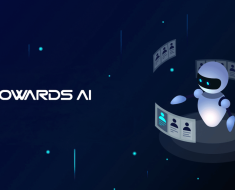Vijay Raghavendra Discusses the Nuances of Coding with Large Language Models

The landscape of software engineering is evolving rapidly, and Large Language Models (LLMs) are at the forefront of this transformation. Vijay Raghavendra, the Chief Technology Officer of SymphonyAI, recently contributed to the Computer Weekly Developer Network’s discussion on the topic. His insights underline the importance of a discerning approach when coding with LLMs.
Considerations for Developers
Raghavendra highlighted the importance of understanding the specifics of the LLM developers intend to use, including its training background. Creating entirely new models, Raghavendra points out, is typically beyond the financial capabilities of most businesses except for the largest organizations. Therefore, developers more commonly engage with foundational LLMs or fine-tune existing ones.
Not All LLMs Are Created Equal
Raghavendra further emphasized that LLMs differ in terms of the number of parameters and performance across various benchmarks. Consequently, these benchmarks should guide developers’ choice of model, with the understanding that no single model excels at all tasks.
Guiding Principles and Applications of LLMs
Meanwhile, a team of researchers from Mohamed bin Zayed University of AI (MBZUAI) has introduced 26 guiding principles for prompt engineering to enhance the quality of prompts for LLMs. This focus on conciseness, context relevance, and task alignment has led to significant improvements in LLMs, with an average 50% enhancement seen under their benchmark evaluation system, ATLAS.
Other significant developments in the field include Microsoft’s introduction of Copilot, an AI assistant designed to leverage LLMs to provide enhanced assistance while prioritizing privacy and security. Over-reliance on LLMs, however, poses challenges in terms of accuracy and reliability, particularly in tasks such as meeting summaries and computer code generation. This underscores the importance of human verification and cautious reliance on the outputs of LLMs.
Additionally, the University of Massachusetts Amherst has developed a new method called Baldur. This method, which leverages LLMs to automatically generate proofs that can be used to prevent software bugs and verify code correctness, has been awarded for its innovative approach to tackling the prevalence of buggy software and its potential catastrophic effects.
Raghavendra’s company, SymphonyAI, is at the cutting edge of this transformation, specializing in AI Software as a Service (SaaS) for various industries, including retail, consumer packaged goods, finance, manufacturing, media, and IT/enterprise service management.





